Spot welding is one of the oldest welding processes where heat, pressure, and electrical resistance fuse two or more metal sheets. If you occasionally work with sheet metal, are a beginner, welding enthusiast, or DIY lover, a spot welder is your go-to choice.
Keep in mind that there are several types of spot welding machines. For example, some spot welders are used in making batteries, autobody, or handheld spot welders for DIY.
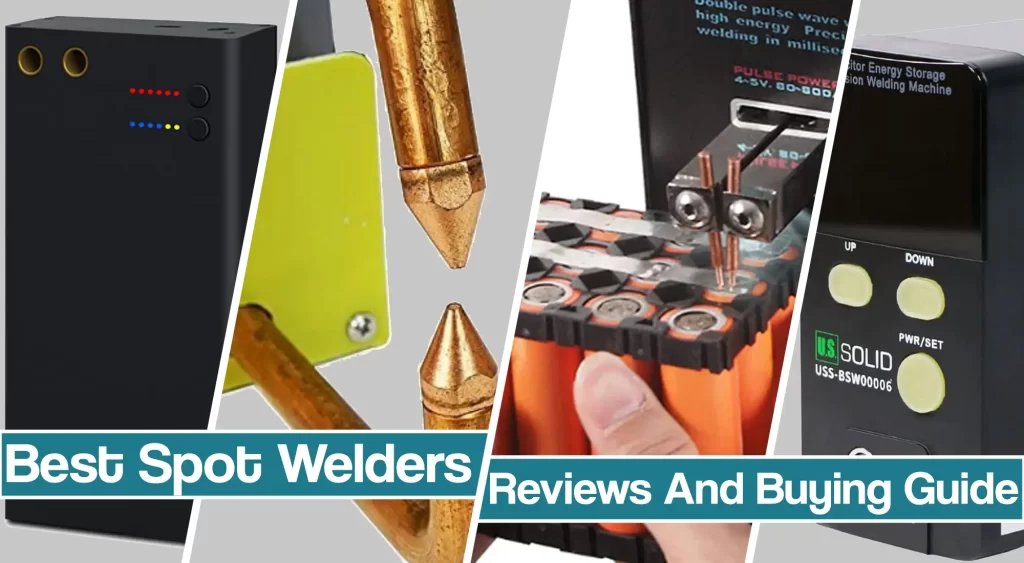
Choosing the perfect one can be a nightmare, but our article will help you select the best spot welder for your application.
Best Spot welder Comparison Table
| Welder Image | Name | Input Power | Output | Max. Welding Thickness | Battery/Autobody | Check Price |
|---|---|---|---|---|---|---|
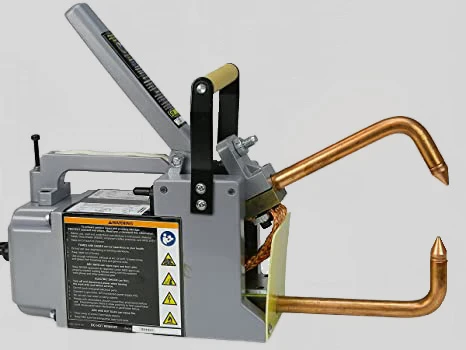 | Stark Professional Portable Electric Spot Welder | 110V/240V | 16A | up to a combined thickness of 1/8″ | Autobody sheet metal | Check Current Price |
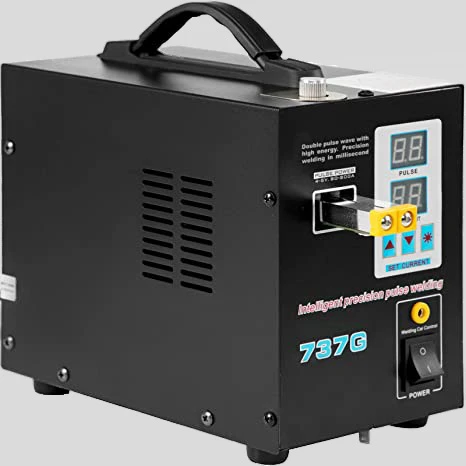 | Mophorn 737G Spot Welder | 110V | 20V DC/50-800A | 0.004 inch | Battery Welding | Check Current Price |
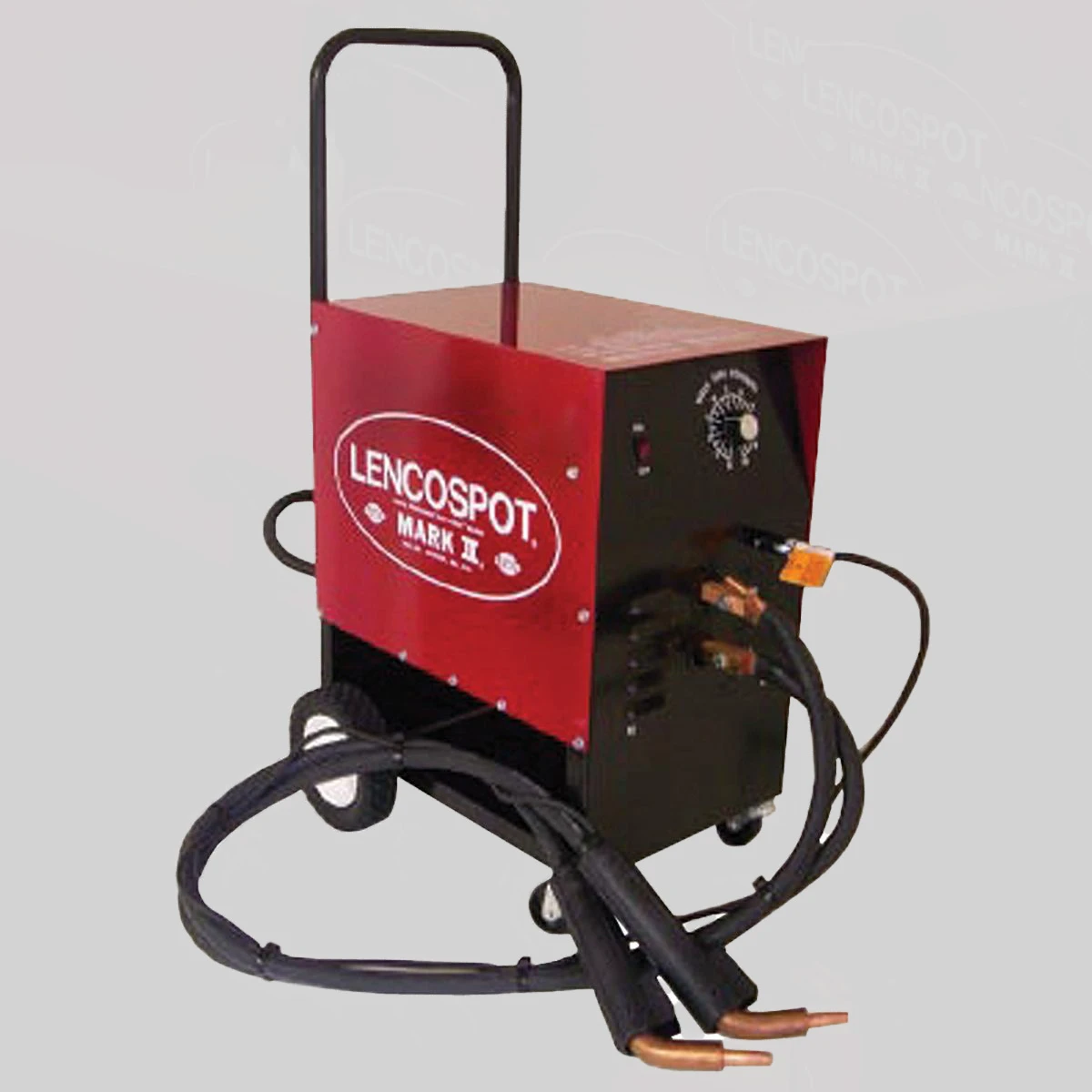 | Lencospot Mark II Autobody Dual-Spot Welder | 220V | 50A | up to 20 gauge Autobody steel | Autobody sheet metal | Check Current Price |
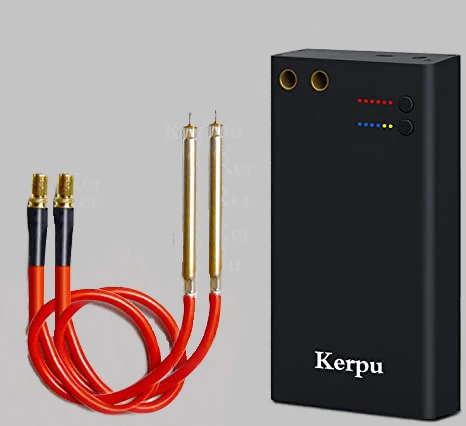 | Kerpu Mini Spot Welder for Batteries | 3.7V | maximum output current can reach 650A | 0.008 inch | Battery Welding | Check Current Price |
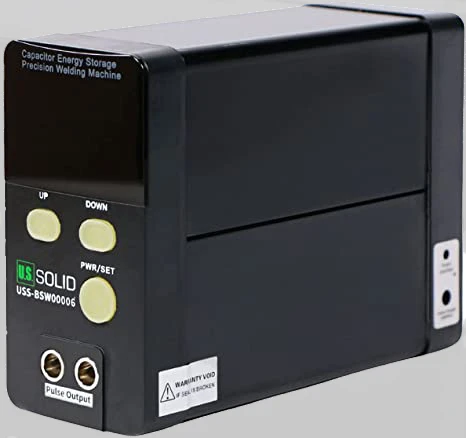 | BSW 05 Battery and Electronic Components 12 kW Spot Welder | 15V 2-3A | 5-5.8 V | 15 V 2-3 A | Battery Welding | Check Current Price |
Best Spot Welder reviews
1. Stark Professional Portable Electric – Best portable spot welder

Stark professional is a portable, air-cooled spot welder that makes quick, strong spot welds in various materials, including steel and cast iron. One of the most significant advantages of this spot welding machine is its ease of use. As a beginner, you will love the simple welding mechanism, which will help you quickly insert the material and weld it.
Ease of use is complemented by a simplistic design. A compact body shape with a built-in handle will help you carry it around the workshop.
However, with 28.4 pounds, this is not one of the lightest units, so you can occasionally get tired from carrying it around. Stark professional welder utilizes a single-phase design. Therefore, you can opt for 120V or 240V power.
You won’t need more than 120 V for light-duty projects, but you should go for 240 V for more serious work. In addition, you can weld up to a combined thickness of 1/8″ sheet steel with the given power. But, keep in mind that the unit doesn’t come with a plug.
Even though this spot welder is aimed at hobbyists and DIY lovers, professional welders will find it helpful. As a beginner, you might find it challenging to set up the machine and start welding. Unfortunately, the instruction manual won’t help you since there are pretty vague instructions. However, once you get the hang of it, you will enjoy welding performance.
Overall, this spot welder offers excellent value for the money spent. Therefore, buying it won’t break your bank. Even though the package doesn’t provide an electrical plug, you get replacement high-quality steel welding tips and decent welding electrodes so that you will be satisfied with this sub $200 machine.
Pros & Cons Summarized
Pros
- Great value for the money spent
- You can opt for both 110V/220V spot welding machine
- Compact design
- Can weld up to 1/8″ sheet metal
- You get replacement high-quality steel welding tips
Cons
- Some find it heavy (28.4 lbs)
- You don’t get a power plug
- Beginners might struggle at the start
Specifications
- Voltage: 110v/240v
- Outlet Voltage: 2.5 kVA @ 50% Duty Cycle
- Amp: 16
- Throat Depth: 6″V
- Weldable Materials: Uncoated mild, galvanized, or stainless sheet steel
- Mild steel: up to a combined thickness of 1/8″ sheet steel
- Weight: 28.4 pounds
2. Mophorn 737G – Budget Battery Spot welder

If you are looking for a budget battery spot welder capable of welding thin nickel-coated steel strips, Mophorn 737G (also advertized as Sunko) is your right choice. This might be the best battery spot welder on a tight budget, with a pulse option and foot pedal control.
Mophorn 737G is a 110V machine, meaning you can plug it into any household outlet. However, low input also means you will get more inferior output suitable for materials 0.05-0.2 mm thick. Also, welding thicker nickel strips is not recommended since they won’t hold properly.
Nonetheless, the value and ease of use you get for the money spent are outstanding. This spot welder features a distinct LCD display that precisely shows pulse quantity and welding current.
You can use either push-up welding or a foot pedal, depending on the application. For example, when assembling a small battery pack, you can use the push-up option with a fixed welding head. In addition, fixed welding tips have LED light functions for precise fixed welding. Nonetheless, you can also use a foot pedal to weld nickel strips.
Mophorn battery spot welder has an intelligent radiator with a built-in smart chip that prevents overheating. However, you shouldn’t use it for more than 20 welds per minute at max power. In addition, make sure you get at least a 20 amp breaker since it might flip the 15 amp one.
Overall, this is a decent spot welder for the money spent. You will even get some nickel in the package and a foot pedal, but keep in mind that it doesn’t support a welding pen. If you are looking for light-duty battery welding, this is your machine.
Pros & Cons Summarized
Pros
- Won’t break your bank
- You can plug it into a regular household outlet
- Push up welding with fixed weld head and foot pedal
- Automatic short point protection
- You get extra metal weld materials
- Battery pack holder
Cons
- Not compatible with welding pen
- Power is limited to 0.2 mm metal thickness
- Requires 20 amp breaker
Specifications
- Voltage: 110V
- Max. Welding Thickness for Nickel Coated Steel: 0.15 mm
- Max. Welding Thickness for Pure Nickel: 0.12 mm
- Max. Welding Current: 50-800 A
- Weight: 11.84 pounds
- Pulse mode selection
- Current settings: 0-99 level
3. The Lencospot Mark II Autobody Dual-Spot Welder – Best Autobody Spot Welder
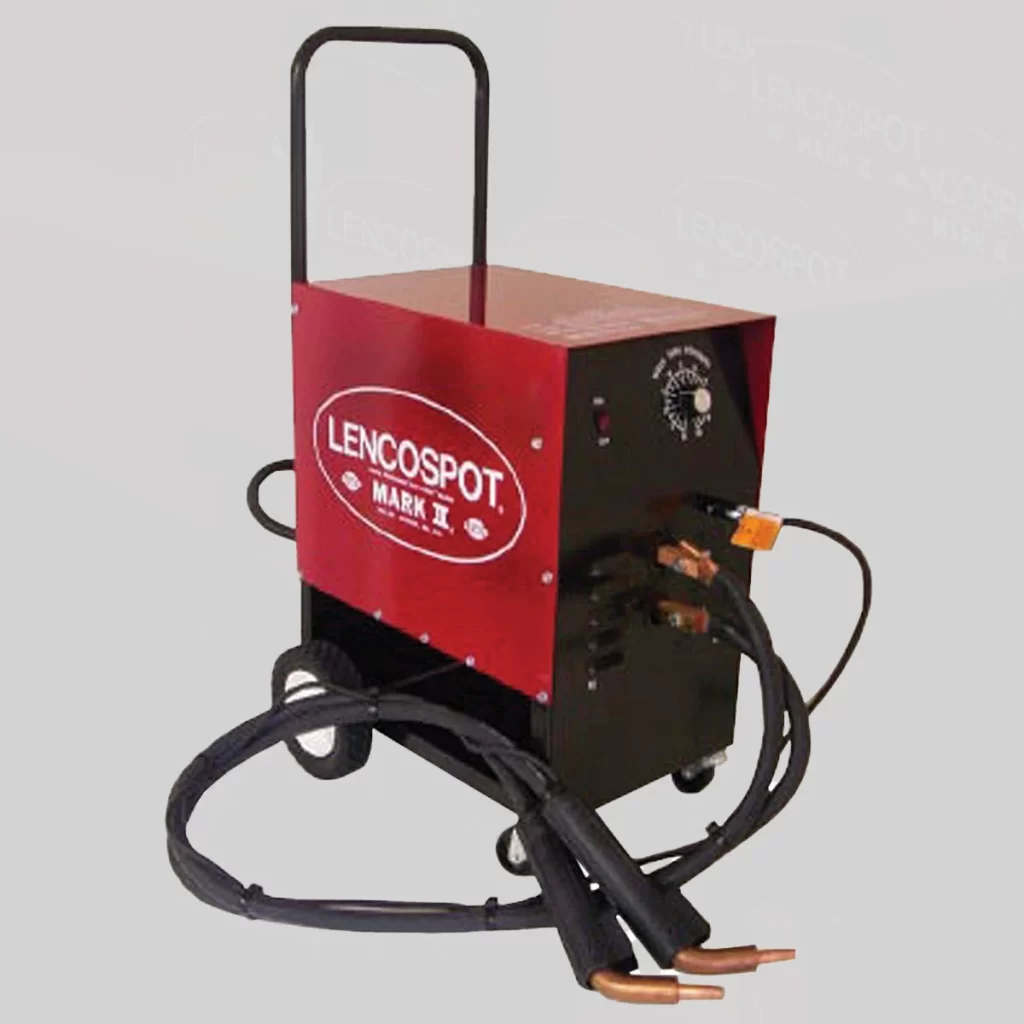
While the first two welders on our list are aimed at somewhat light-duty applications and designed for thinner materials, The Lenco spot welder is a real deal. This is an autobody spot welding machine for small shops or home auto restoring businesses. Why? Because it is significantly more expensive than other spot welders on our list, but your investment can quickly pay off.
Lencospot welder is characterized by solid and robust construction so it seems like it is built to last. Even though it weighs 110 lbs, a built-in cart with wheels will help you move it around the workshop quickly.
However, with a 50″ long power cable input, you won’t even need to move it so much. Once it arrives, you will need to put it together, which is basically installing four screws for the handle and two bolts and nuts for cables.
Even though there’s nothing complicated about using this spot welder, it might take you some time to get used to the settings as a beginner. Nonetheless, seasoned welders found it more than quite capable. You can use it to weld autobody steel 20-14 ga thick or weld steel or stainless steel sheet.
Keep in mind that this spot welding machine requires 208/240V power input to run. Nonetheless, many welders state it makes smooth and consistent weld every time. That’s probably why it is one of the favorites among many welders, which think the latest machines are reliable just like previous versions.
In certain situations, some parts might be challenging to find. However, since this is a made in USA machine, tracking down the suppliers should be too hard. Overall, you will enjoy the durability, capability, and weld quality, but at a specific price.
Pros & Cons Summarized
Pros
- Protected control panel
- Solid and robust construction
- Built-in cart with wheels
- You can weld autobody steel 20-14 ga thick
- Makes smooth and consistent weld
- Made in the USA
Cons
- More expensive than other spot welding machines on the list
- Massive unit with 110 lbs.
- Some parts might be challenging to find
Specifications
- Voltage: 240V
- 50′ Power input cable, No. 10/3 wire
- Welding cable length: 5′
- Maximum welding capacity: 20 gauge Autobody steel
- Weight: 110 lbs.
- Primary voltage: 208/230
- Single-phase: 60/50Hz KVA
- Line fuse: 50 AMP
4. Kerpu Mini Spot Welder for Battery – Best pocket spot welder

Battery spot welders don’t always have to be big machines; on the contrary, you can put your Kerpu mini spot welder in your pocket and carry it around. This is a 1.72-pound spot welding machine with a maximum power output of 650A and is best suitable for spot welding 18650 and other cylindrical lithium batteries, nickel-metal hydride batteries, cadmium nickel batteries.
You don’t need an external power source to do the spot weld, meaning you can use it even when there are no outlets around.
That’s the courtesy of a 7,500mAh battery which can be recharged using a USB type C module you even get in the package. However, keep in mind that battery levels can affect welding capability, so ensure the welder is fully charged when opting for maximum output.
One of the things that are often discussed is the ease of use. For example, the Kerpu portable spot welder has three light indicators that show battery level, output power, and mode (manual or automatic). Therefore, straightforward design makes it really user-friendly.
However, there was a lack of information regarding the use in the past. That’s why many welders had issues achieving strong welds. In the improved version, manufacturers state you should use light pressure and the sides of the spot welding pen. Applying too much pressure and a bigger contact surface can cause low thermal conductivity on the metal surface, reducing the overall capability.
So even though this is a DIY and light-duty spot welding machine capable of welding only up to 0.2 mm/0.007 inch iron, steel, and stainless steel materials, it will take you some time to master it. Safety features such as overheating and overcharge protection will make it last longer, but you should know that the low duty cycle doesn’t suit higher production.
Pros & Cons Summarized
Pros
- Pocket size battery welder
- Weighs only 1.72 pounds
- Three light indicators that show battery level, output power, and mode
- Safety features such as overheating and overcharge protection
- Can weld iron, steel, uncoated mild steel, and stainless steel materials
Cons
- Welding capability may vary off battery level
- It will take you some time to get used to it
- Suitable for welding job up to 0.2 mm/0.007 inch
Specifications
- Battery capacity: 7,500mAh polymer power battery
- Charging: Type-C port 2A input
- The maximum output current: 650A.
- Welding capability: less than 0.2 mm/0.008 inch.
- Discharge rate: 100C
- Suitable Batteries: 18650 and other cylindrical lithium batteries, nickel-metal hydride batteries, cadmium nickel batteries
5. BSW 05 Battery and Electronic Components 12 kW Spot Welder – Best industrial use battery welder

U.S. Solid is a spot welder equipped with two supercapacitors that offer a stable power source for pulse spot welding. Therefore, the weld quality and consistency are not affected by the AC electric current and breaker tripping.
With the maximum power of 12 kW, you can use it for the welding thickness range of 0.4 mm nickel-coated steel and 0.35 mm pure nickel. Compared to the Mophorn spot welder, the U.S. Solid machine can run off 110/220V. In addition, it is pretty lightweight so that you can carry it around easily.
Another advantage is the 73B mobile welding pen with a replaceable welding electrode, pulse indicator, and pressure balance adjustments. The Mophorn spot welder we covered is not compatible with a pen. In addition, you can always opt for a 73S Welding Arm which offers a more traditional battery welding approach.
The design is pretty straightforward, as capacitor voltage and welding current are displayed on the LED screen. To start welding, you need to set welding power to 0-99 t and pulse delay 20-50 ms or opt for manual or automatic mode.
Keep in mind that this spot welder is aimed for individual or industrial use, unlike other toy-grade products, where the safe product design keeps you safe from battery fire danger. However, it is pricier than some battery spot welders we covered in the article.
One of the good things is that U.S. Solid services your spot welder under regular use and service for one year from the original purchase date, making it one of the best battery spot welders out there. Some buyers had issues with malfunctions straight out of the box, but the company can send a replacement or grant a refund.
Pros & Cons Summarized
Pros
- Two supercapacitors that offer stable power
- Can run off 110/220V power
- 73B mobile welding pen and 73S Welding Arm
- Aimed for individual or industrial use
- One year warranty
- You can easily carry it around
Cons
- More expensive than other battery welders
- Some buyers had issues with malfunctions straight out of the box
Specifications
- Power Adapter Input: AC 100-240 V 50/60 Hz
- Machine Charging Time: 10-20 minutes
- Output Welding Current: 500-2000 A(pulse)
- Maximum Welding Power: 12 KW
- Pulse Delayed Time: 20-50 ms
- Welding Thickness of Nickel: 0.05-0.4 mm
- Package Weight: 7.6 lbs
Spot welding Applications
Thanks to the ability to weld nearly all conductive materials, spot welding is widely used in many industries and has many applications. For example, it found its way into manufacturing gas sensors, solar panels, switches, high voltage cables, and circuit boards. In addition, spot welding is one of the prevalent methods in the automotive industry, because it is cost-efficient and works excellent with metal sheets.
Resistance spot welding is also used in industries like aerospace, rail, manufacturing, electronics, construction, battery, and others.
Pros and Cons of Spot welding
Just like any other welding method, spot welding has its ups and downs.
Pros:
- you can use spot welding to join any conductive metal such as mild steel, nickel alloys, titanium, but also aluminum, stainless steel, or galvanized steel
- spot welders utilize much less power than MIG or TIG welding machines
- spot welding is easy to use and master
- produces the highest quality welds with sheet metal
- relatively cheap to operate and automate
Cons:
- working in confined spaces can be hard
- spot welding is not so efficient when dealing with thicker material
- fluctuations can affect the weld quality
- sparks, fumes, and heat can injure the operator




